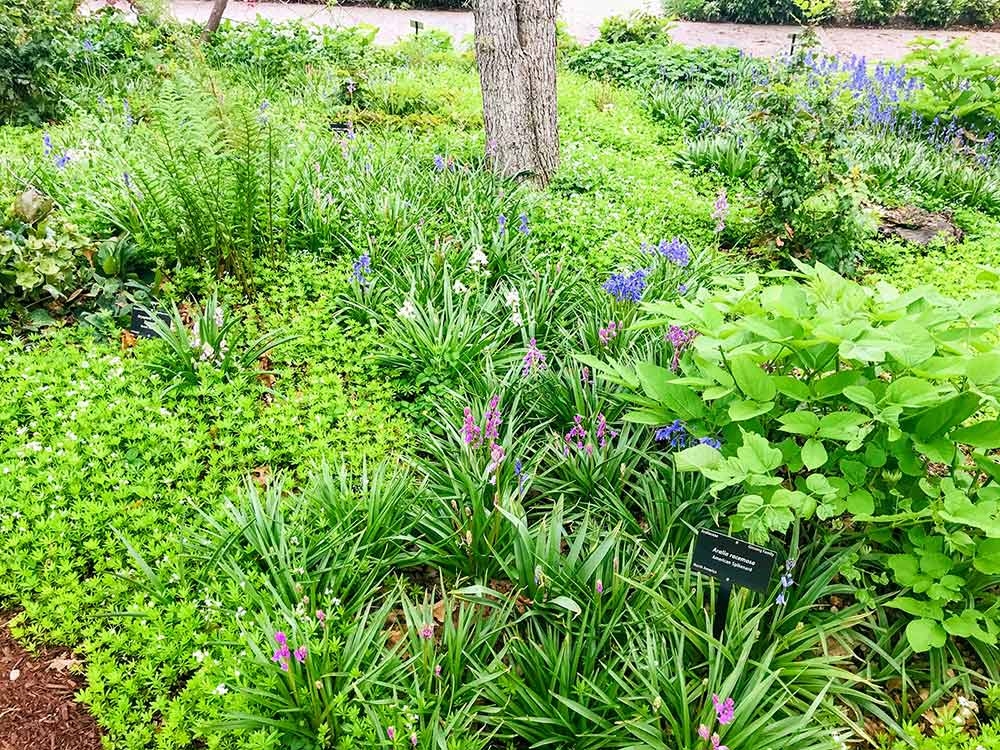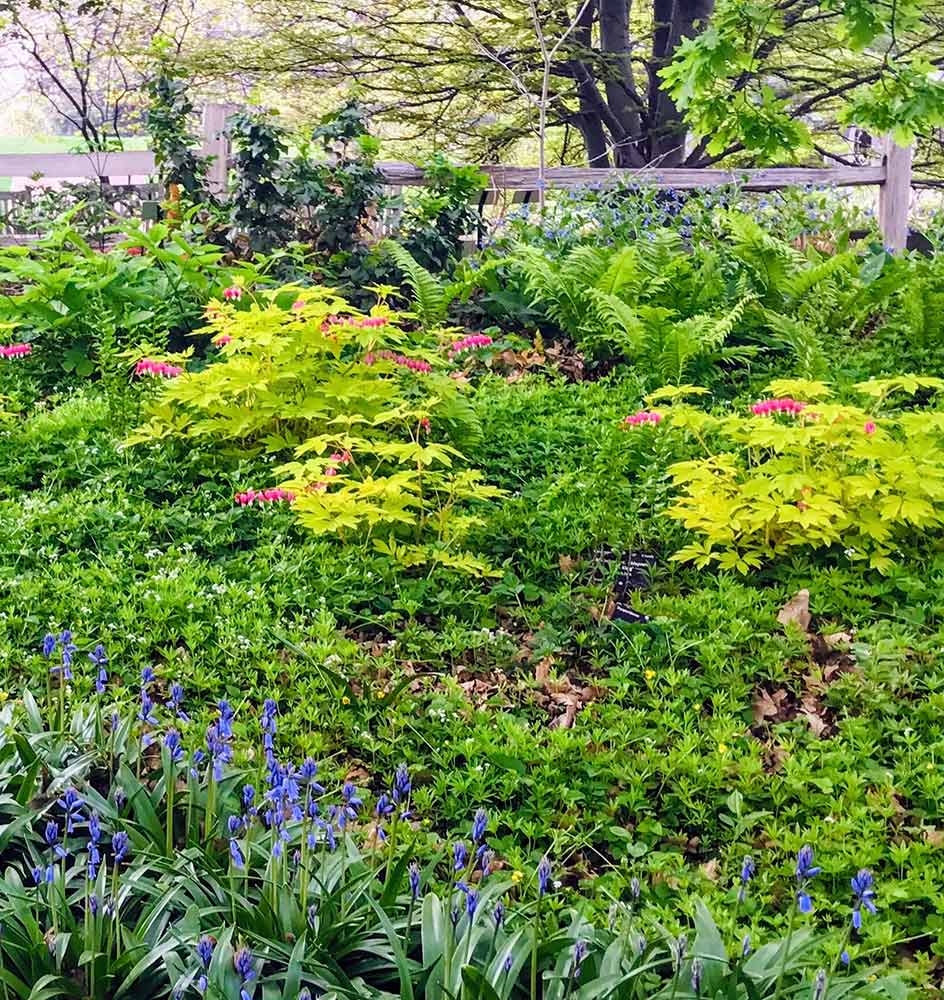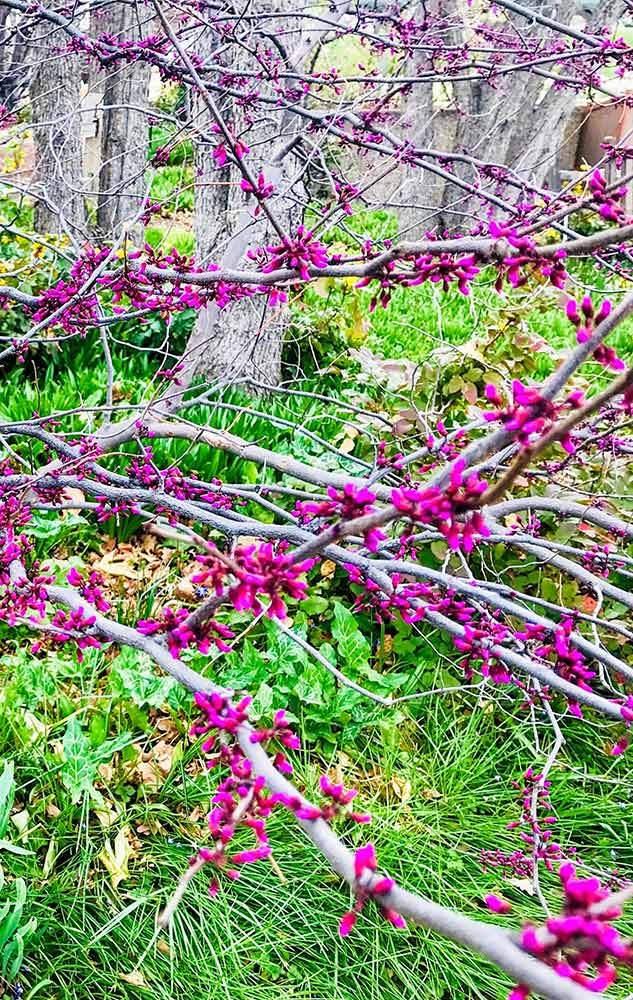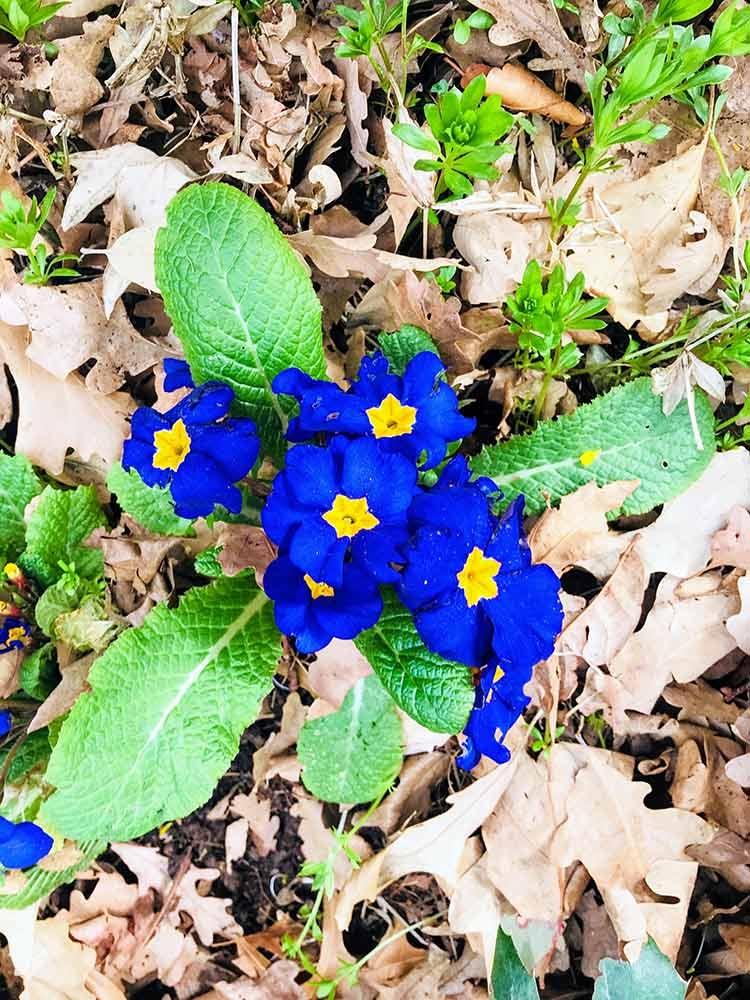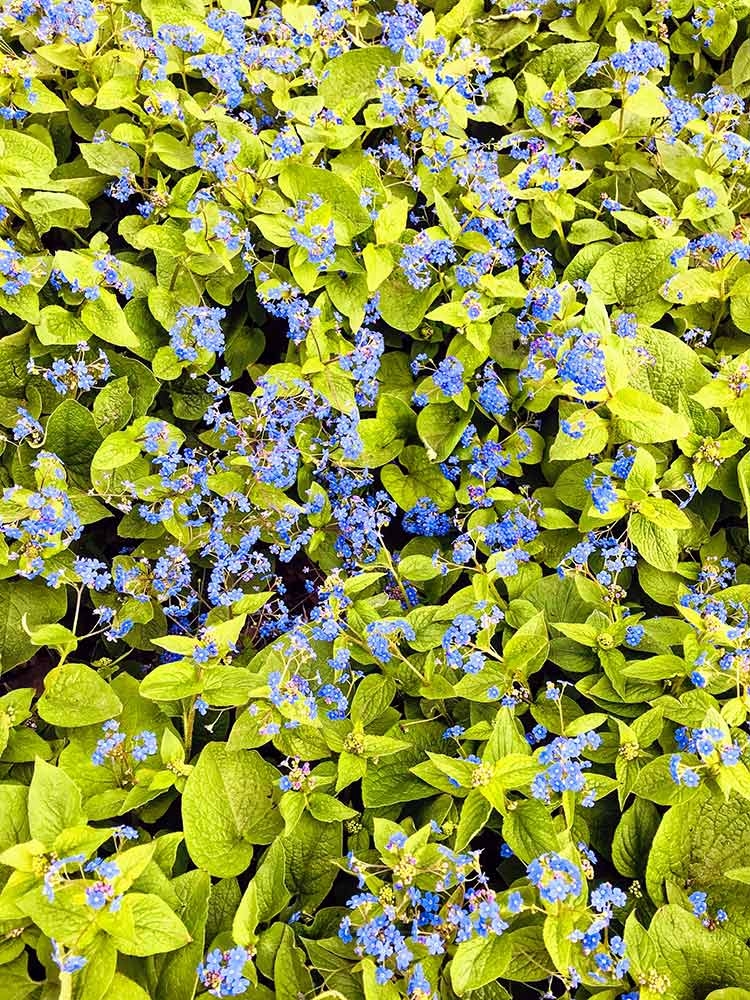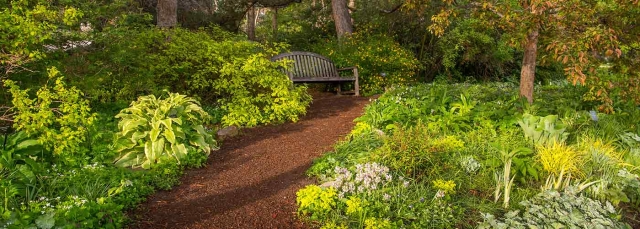April Walking Tour – Spring in Oak Grove
By Mike Holloway , Horticulture Coordinator
One of my favorite places during spring at Denver Botanic Gardens is Oak Grove. It represents everything I love about spring: the color green, rebirth and colorful flowers, just to name a few. When I was assigned this garden many years back, it was a mix of hybrid oaks and ground covers surrounding a circular concrete pad. I thought to myself about all the potential this garden had, and my head started filling with ideas. One of those ideas was how beautiful Oak Grove could be in spring. So, I brought my ideas to reality over the next decade by installing a mulched path that would lead visitors on a walk through the woods, where they would be greeted by beautiful understory perennials, shrubs and trees along their journey.
The blooms in Oak Grove will start looking their best starting in mid-April. In the meantime, be sure to see Chionodoxa forbesii Blue Giant’ and ‘Pink Giant’ (also called glory-of-the-snow), along with a few of the primroses that are just coming up. The Chionodoxa forbesii are all along the southwest edges of Oak Grove.
Starting in mid-April:
- One of the first things you will notice when you enter Oak Grove during spring is sweet woodruff (Galium odoratum), a lush, green groundcover that is topped with tiny white flowers. The flowers are fragrant and edible and have a sweet, nutty flavor. The leaves smell like freshly mowed hay when dried.
- Next, you will probably see the sprays of small, intense blue flowers atop the green, velvety leaves of Siberian bugloss (Brunnera macrophylla). As you wander around the inner circle you will encounter brightly colored primroses (Primula vulgaris) and the dainty, fairy-like flowers of barrenwort (Epimedium × rubrum and E. × versicolor ‘Sulphureum’) along with the pink heart-shaped flowers and golden leaves of bleeding heart (Lamprocapnos spectabilis ‘Gold Heart’, formerly known as Dicentra) amongst the fresh, new fronds of various ferns.
- As you head up the mulched path passing the new leaves of emerging hostas and various wood ferns, you will immediately notice the blue and pink blooms of hundreds of Spanish bluebells (Hyacinthoides hispanica ‘Excelsior’ and ‘Queen of the Pinks’). These colorful bulbs have naturalized and hybridized throughout the garden creating different shades of pink, blue and white. Continuing along the path, you are sure to see the bright yellow flowers of Oregon grape (Berberis repens) and the brilliant, scarlet-purple flower buds of the Forest Pansy redbud (Cercis canadensis ‘Forest Pansy’). These shrubs and trees are perfect understory plants because they grow well in shade and dappled sunlight.
- As you head up the path and through the woods you will reach a clearing with wooden benches where you can enjoy sitting under the trees and listening to the rushing waterway behind the benches. If you look closely ahead, near the split rail fencing, you may notice an unusual dark rose-colored blossom hanging like a pendulum from a medium sized tree. You have found our pawpaw tree (Asimina triloba). These unusual flowers will eventually develop into a large, delicious fruit that tastes like a cross between a banana and a mango.
I hope that you have enjoyed our walk through the woods. Whenever you need to relax and de-stress, come back and visit us anytime.
Gallery photos by Mike Holloway
Gallery
